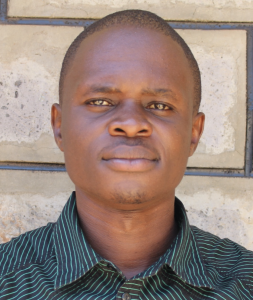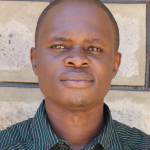Please note, original photos were taken before the pandemic.
We arrived at Jivuye Primary School on a sunny mid-morning, but the skies became cloudy soon after. This is a rural area that is peaceful and quiet. The roads are not tarmacked and are very slippery, especially during this rainy season.
Jivuye Primary School was established by the Friends Church during the missionaries era in the region. The Christian influence had already been embraced by the community, hence the school picked up quickly and the population has kept on growing over the years. Today there are 272 pupils and 12 teachers and staff at the school.
On a typical school-going day, each pupil begins their morning early at home by collecting water to bring to school since there is no reliable water source there. Pupils must either take water from their family's water storage, such as their home rain tanks or buckets where their mothers already fetched water by hand. Otherwise, after washing up and taking breakfast, pupils begin their walk to school and hope to collect water along the way. Some students will fetch water from surface runoff on the side of the road or streams, simply because it helps them get to school on time.
The pupils arrive by 7:00 am while carrying their water and books. Some pupils forget to come with water when they are running late, so they are forced to go back home and get water before they can join their class. On such occasions, these pupils end up missing classes and are punished in school for their negligence.
There are many complications to an entire school relying on students for water. Pupils often arrive late and tired from their burdensome walk, and sometimes they are too tired to focus well in class. This negatively impacts their academic performance. Though the school relies on students carrying water from home for all of the school's drinking, cooking, and cleaning needs, the students can never carry enough to meet all of these needs. Still, it is a daily requirement the school has no choice but to enforce.
Once at school, the students immediately embark on cleaning the school compound, sweeping classrooms, and cleaning the toilets. After cleaning, they commence with their normal lessons which end at 4:00 pm with breaks for snacks, games, and lunch throughout. Sometimes the pupils get pulled out from class to fetch more water for cooking if they run out during the day. Lunch breaks are often used to send students home to fetch more water, too.
We observed most pupils inserting their fingers into their jerrycans for support while carrying their water to school. The jerrycans were also very dirty, leading to the conclusion that the water was also not safe for human consumption. Even clean water can be contaminated by dirty containers or hands. And since the water is combined for use at school, even 1 contaminated source means everyone is at risk of water-related diseases.
Many pupils and teachers alike contract diarrhea and other water-related illnesses due to their dirty water supply at school.
"It took me a while to realize that the recurrent salmonella infection I was being treated for was due to drinking the unsafe water in the school. Since then, I learned how to quench my thirst with tea during school hours," said Deputy Headteacher Eston Mugei.
"Buying drinking water is reserved for parties and visitors," explained Headteacher Habil Mucheni. "This has been an unneccessary expense which I sometimes forego, and I know it compromises on my general wellbeing."
But the pupils need more than tea throughout their day since the kitchen cannot boil enough water to meet all of their drinking needs, and the school cannot afford to buy water more often. Frequent cases of water-related illnesses mean a lot of missed classtime for students, and it drains their families and the school as they try to pay for medical treatment.
There is a very small plastic rain tank on campus, but it holds just a few thousand liters. It quickly and often runs dry, which is why students are still expected to bring water to school every day. This water crisis here is preventing students and the school from reaching their full potential.
What We Can Do
Rain Tank
A 75,000-liter rainwater catchment tank will help alleviate the water crisis at this school. The school will help collect the needed construction materials such as sand, bricks, rocks, and water for mixing cement. We will complement their materials by providing an expert team of artisans, tools, hardware, and the guttering system. Once finished, this tank will begin catching rainfall that will be used by the school’s students and staff for drinking, handwashing, cooking, cleaning, and much more.
We and the school strongly believe that all of these components will work together to improve standards at this school, which will help lead to better student academic performance and will help to unlock the potential for these students to live better, healthier lives.
Handwashing Stations
There is currently nowhere for students to wash their hands after using the latrines or before eating lunch, let alone the water to do so.
The student health club will oversee the 2 new handwashing stations we will provide, and make sure they are kept clean and in working condition. The club leaders will fill the handwashing stations with water daily and make sure they are always supplied with a cleaning agent such as soap or ash.
VIP Latrines
2 triple-door latrine blocks will be constructed with local materials that the school will help gather. 3 doors will serve the girls while the other 3 will serve the boys. All of these new latrines will have cement floors that are designed to be easy to use and to clean. And with a rain tank right on school property, there should be enough water to keep them clean.
Training on Health, Hygiene, COVID-19, and More
We will hold a 1-day intensive training session with students, teachers, and parents. This training will cover a wide range of topics including COVID-19 symptoms, transmission routes, and prevention; personal and environmental hygiene; and the operation and maintenance of the rain tank, latrines, and handwashing stations. There will be a special emphasis on handwashing.
Our team of facilitators will use a variety of methods to train, including participatory hygiene and sanitation transformation, and asset-based community development. We will initiate a student health club, which will prepare students to lead other pupils into healthy habits at school and at home. We will also lead lectures, group discussions, and provide illustrative handouts to teach health topics and ways to promote good hygiene practices within the school including handwashing and water treatment. We will then conduct a series of follow-up trainings before transitioning to our regularly scheduled support visits throughout the year.

 Rainwater Catchment
Rainwater Catchment
 Rehabilitation Project
Rehabilitation Project










































